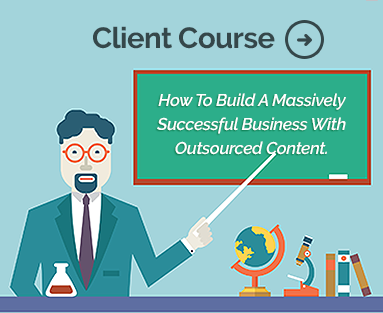The Internet is by far one of the most powerful tools that you can leverage to help grow your business. After all, you can’t expect to maximize your reach if nobody is able to find your company online. To help increase your visibility, you’ll need to include high-quality content on your site.
However, there are numerous elements of quality content that you may not be aware of. Let’s explore what you should know.
1. Length of The Content
Interestingly, many people are unaware of the role that length plays when determining the quality of content. Put simply, longer content will help keep users on a specific page for an extended period of time.
This tells Google that the content on your page is relevant to the user’s interests. By extension, this reaffirms that Google displayed results that sufficiently correlated with the user’s search query.
However, it’s also important to consider the improved experience that longer content offers. After all, it’s not often that you are able to answer a question your audience has in less than a few hundred words.
Something to keep in mind is that you should avoid incorporating “fluff” in the content that you use on your website. For those who are unfamiliar with this term, it refers to including text that provides no value to the reader.
Although including fluff may help you reach your desired length, it can take away from the value that your content provides.
2. Relevant Images
Images are a great way to accent written content. Not only do they help your audience visualize the topic you are discussing, but they also help break up large blocks of text.
There’s also something to be said about the inherent value that images have in terms of aesthetic appeal.
As you might guess, infographics and videos can help accomplish the same task. Keep in mind, however, that you should not incorporate too much visual content.
This can serve to distract the reader and cause them to become less engaged.
3. Professionally-Written Copy
Unfortunately, incorporating content on your website that is full of grammatical errors will only serve to deter users from staying on your page. This will increase a metric known as a bounce rate.
This is a term that refers to a scenario where people immediately leave the website shortly after navigating to it. A situation like this tells Google that the content the user encountered was either irrelevant, low-quality, or both.
Instead, the copy that you use should always be professionally written. In the event that you do not have an internal team that can handle this obligation, it’s in your best interest to outsource.
Attempting to manage this responsibility on your own will likely fall short of the standards your audience is expecting.
4. Readability
If your content does not fall within a certain readability range, your audience may not get as much out of it as you would like them to. In general, it’s highly recommended that the content you publish is something that a ninth-grader could understand.
The more complex your content is, the less likely your readers will be able to understand the major points you are trying to convey. It should come as no surprise that a situation like this could have results similar to publishing low-quality content.
5. Providing Value to Your Audience
So, your content has been professionally written, formatted, and incorporates plenty of supporting images. However, does it provide something of value?
In general, your business website is not a place to aimlessly share your thoughts – especially if they are not relevant to your industry. Instead, your content should consist of something like a guide, professional analysis, etc.
For instance, someone who works in the real estate industry could offer a detailed breakdown of the current conditions of your local market. This information would be highly useful to homebuyers, investors, etc.
As a result, the company that published this content will establish itself as an authority within its industry. In the future, this gives the content that they publish a much larger impact.
To help put this into perspective, imagine you are training for a race and are seeking advice to improve your routine. Chances are that you would be more willing to trust content uploaded by Nike as opposed to a clothing brand you have never heard of.
6. Shareability
When your audience shares the content you publish, there’s a chance that you will exponentially increase your reach.
For example, let’s assume that you link to a blog post on your website from your business social media account. If someone who has 500,000 followers decides to share your content with their own audience, you’ll experience a drastic increase in exposure.
In order to ensure that your content is shareable, your headline needs to be captivating. This is, of course, the first exposure that many people will have to your company.
It’s also best to link to long-form content so that your audience stays on the page for as long as possible.
Incorporating High-Quality Content Is Essential
This is something that simply cannot be overlooked. Fortunately, doing so is much easier than you might anticipate. Keep this in mind when developing a high-quality content strategy so that you can take your business metrics to the next level.
Want to learn more about what we have to offer? Feel free to get in touch with us today and see how we can help.




Comments are closed.